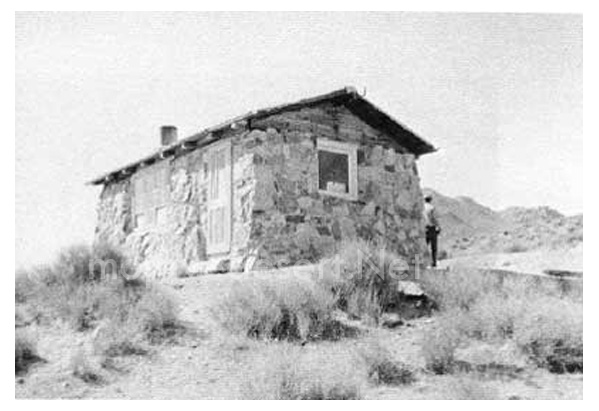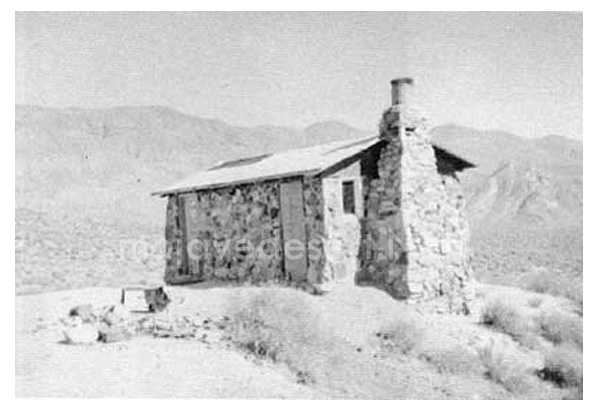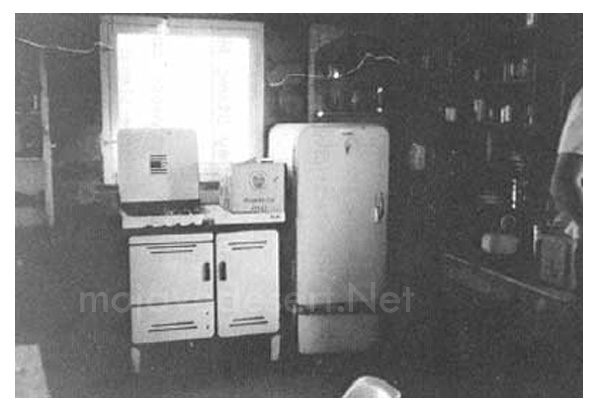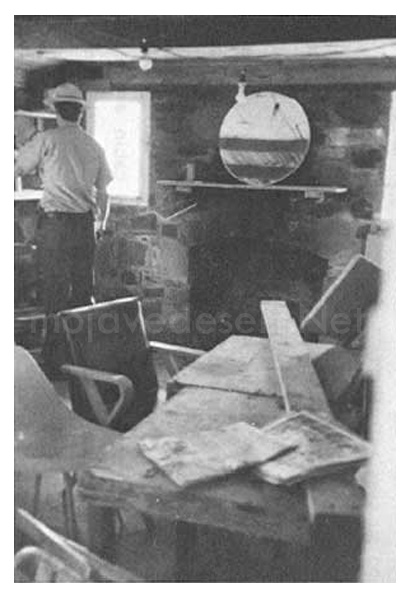Geologist's Cabin
The Geologist's Cabin in Butte Valley, near Anvil Spring and Striped Butte, was built in 1930 by Asa "Panamint Russ" Russell as part of his mining operations near Manly Peak. Though Russell once claimed an older stone house existed at Anvil Spring from the 1880s, historical records suggest he may have confused it with a structure at Greater View Spring. The one-room stone and masonry cabin features a cement floor, fireplace, and multiple windows and doors. In recent years, retirees working local mining claims have used it, though vandalism has damaged parts of the roof and an outdoor stone oven. Russell also developed Anvil Spring, constructing a rock-lined cistern and successfully growing Concord grapes. Though exposed to the harsh elements and time, the Geologist's Cabin remains a sturdy and lasting landmark in Death Valley's Butte Valley, offering a glimpse into the rugged life of prospectors like Panamint Russ and the region's enduring mining history.

North and east elevations of "Geologist's Cabin" at Anvil Spring in Butte Valley.

West and south elevations of "Geologist's Cabin." Note remains of small stone oven on terraced area.

Interior along north wall of "Geologist's Cabin" in Butte Valley.

Interior view toward south wall of "Geologist's Cabin."
~
Life on the Desert
by Panamint RussArchive Page
Source - NPS -- Historic photos Linda Greene - 1978